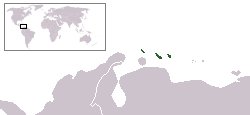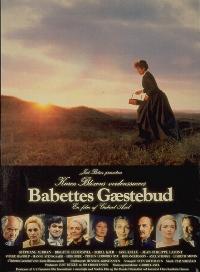
Hengelo is a city in the eastern part of the Netherlands, in the Twente region, in the province of Overijssel. It is part of a larger urban area that also includes Enschede, Borne, Almelo and Oldenzaal.

Screaming Trees were an American rock band formed in Ellensburg, Washington, in 1984 by vocalist Mark Lanegan, guitarist Gary Lee Conner, bassist Van Conner, and drummer Mark Pickerel. Pickerel was replaced by Barrett Martin in 1991. Screaming Trees became known as one of the pioneers of grunge along with Melvins, Mudhoney, U-Men, Skin Yard, Soundgarden, Green River, and Malfunkshun, among others. Although widely associated with grunge, the band's sound incorporated hard rock and psychedelic elements.

Papiamento or Papiamentu is a Portuguese-based creole language spoken in the Dutch Caribbean. It is the most widely spoken language on the Caribbean ABC islands.
Wax Trax! Records is an American independent record label based in Chicago. It began as a record shop in Denver, Colorado, opened by life partners Jim Nash and Dannie Flesher, who sold the store in 1978 and moved to Chicago. In November of that year, they opened a store under the same name in the Lincoln Park neighborhood. During the 1980s and 1990s, the accompanying record label became a strong presence on the industrial music scene as well as the punk rock scene in Chicago, and an outlet for European bands. The label was purchased by TVT Records in 1992 and was discontinued in 2001. In 2014, it was re-established by Julia Nash, daughter of co-founder Jim Nash.

Jan Willem Lincoln "Janwillem" van de Wetering was the author of a number of works in English and Dutch.

Babette's Feast is a 1987 Danish drama film directed by Gabriel Axel. The screenplay, written by Axel, was based on the 1958 story of the same name by Isak Dinesen. It was produced by Just Betzer, Bo Christensen and Benni Korzen, with funding from the Danish Film Institute. It stars Stéphane Audran, Birgitte Federspiel, and Bodil Kjer.

Ellen Fraatz, known professionally as Ellen Allien, is a German electronic musician, music producer, and the founder of BPitch Control music label. Her album Stadtkind was dedicated to the city of Berlin, and she cites the culture of reunified Berlin as one of the main inspirations for her music. She sings in both German and English. Her music is best described as a blend of IDM and techno music, which is dance-floor oriented and has noticeable experimental elements. She lives in Berlin and calls it the "best city in the world."
Ben Liebrand is a Dutch dance music DJ and remixer. He has produced for artists such as Forrest and MC Miker G & DJ Sven and remixed tracks by artists such as Alexander O'Neal, Salt-N-Pepa, Sting, TLC, Fun Fun, Tavares, The Limit, Bill Withers, Frankie Valli & The Four Seasons, Hot Chocolate, Pia Zadora, The Doobie Brothers, The Art Of Noise, Dimples D and Phil Collins. He has also seen success under his own name, a prime example being his remix of Jeff Wayne's "The Eve of the War", which reached number three on the UK Singles Chart in 1989.
TMF was a 24-hour music channel operated by Viacom International Media Networks in the Netherlands. The channel was previously in every standard TV package, but it ceased operating on 1 September 2011. The channels operations were based in Amsterdam. The channel was previously known as TMF6 and TMF9.
Amsterdam University of Applied Sciences is a large vocational university located in Amsterdam, Netherlands. The AUAS mainly offers bachelor's degree programmes, but also has a number of (professional) master's degree programmes. For students from the AUAS' international partner institutes it is possible to study at the AUAS as an exchange student.
Babette March, pronounced Marx, born Barbara Marchlowitz, formerly Babette Russell, or simply Babette, who is now known by the name Babette Beatty, was the first Sports Illustrated Swimsuit Issue cover model. She was on the swimsuit issue cover of the January 20, 1964, issue. This has been credited with making the bikini a legitimate piece of clothing.

Inez van Lamsweerde and Vinoodh Matadin are a Dutch-American fashion photographer duo, whose work has been featured in fashion magazines and advertising campaigns. They also produce independent art work.

Dutch is a West Germanic language, spoken by about 25 million people as a first language and 5 million as a second language and is the third most spoken Germanic language. In Europe, Dutch is the native language of most of the population of the Netherlands and Flanders. In South America, it is the native language of the majority of the population of Suriname, and spoken as a second language in the polyglot Caribbean island countries of Aruba, Curaçao and Sint Maarten. All these countries have recognised Dutch as one of their official languages, and are involved in one way or another in the Dutch Language Union. Dutch Caribbean municipalities have Dutch as one of the official languages too. Up to half a million native speakers reside in the United States, Canada and Australia combined, and historical linguistic minorities on the verge of extinction remain in parts of France and Germany.

De:Bug was a German magazine covering "electronic aspects of life", published monthly in Berlin from 1997 to 2014. Following a new definition of culture, the magazine kept track of electronic music styles such as techno, electro or house, as well as all intersections of daily life with digital technology, focusing on the internet as a social space influenced by issues such as interface design, web art, and file sharing. A second focus was on hardware, the latest computer games and software for musicians and other creative professionals. In the sixteen years of its existence, it published more than 50,000 reviews.

The Dutch East Indies, also known as the Netherlands East Indies and Dutch Indonesia, was a Dutch colony with territory mostly comprising the modern state of Indonesia, which declared independence on 17 August 1945. Following the Indonesian War of Independence, Indonesia and the Netherlands made peace in 1949. In the Anglo-Dutch Treaty of 1824, the Dutch ceded the governorate of Dutch Malacca to Britain, leading to its eventual incorporation into Malacca (state) of modern Malaysia.

Joany Franka Johanna Ayten Hazebroek Kalan, known professionally as Joan Franka, is a Dutch singer and songwriter of Turkish descent. She represented the Netherlands in the Eurovision Song Contest 2012 with the song "You and Me". She became known in the Netherlands through her participation in the first season of The Voice of Holland.
Babette van Teunenbroek is a Dutch former cricketer who played as a right-handed batter. She appeared in nine One Day Internationals for the Netherlands between 1984 and 1989, and one One Day Internationals for International XI at the 1982 World Cup. She played club cricket for the Amsterdamsche Cricket Club (ACC) and the Haarlemsche Cricket Club Rood en Wit (R&W).
Alexander van Slobbe is a Dutch fashion designer.

The Cinema of Suriname is part of the Surinamese culture. National cinema, as a kind of artistic creativity, was born in the second half of the 70s of the 20th century.












